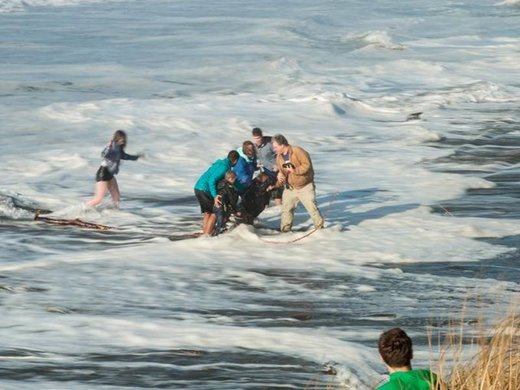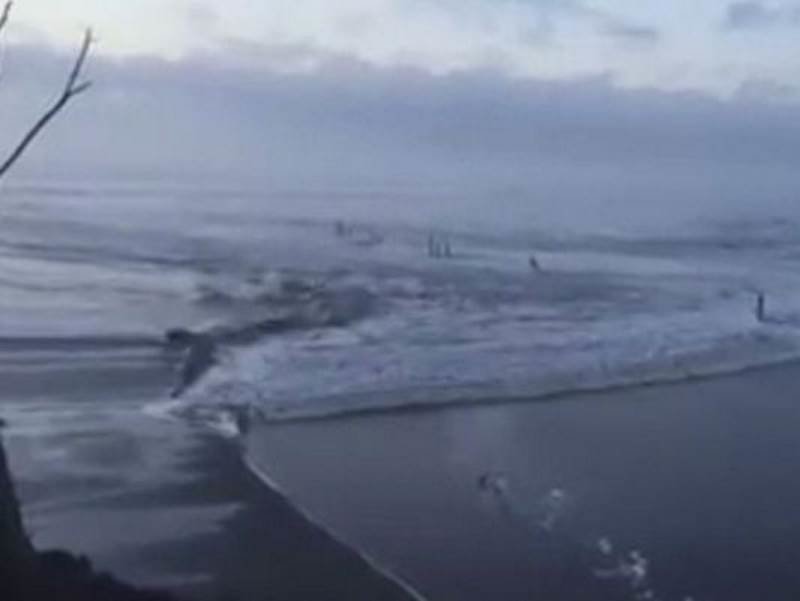"The tide was coming in but that was definitely a rogue wave that came in quickly and big -- filled up the entire creek bed and beach," she said. Sumi says she visits the area regularly. "I've never seen a big wave come in like that," she said. The wave was carrying logs and debris with it. "It's pretty dangerous when those waves roll through," she said.
She posted the video on Facebook and some people compared it to a "mini tsunami."
"That one you couldn't run fast enough to get out of the way," she said.
Steve Martin was with a group on the beach at Ocean Shores when the surge happened. "I was up on the bluff and had not gone down to the beach yet, but was on my way," he said. Martin saw a police car coming right to left, then his friends saw the wave, as did the officer in the police car.
"He pulled a quick u-turn and gunned it to try and beat the wave as our friends were at a dead run towards the bluff. As you can see from the photo, they didn't make it," he said. "No one was seriously injured, just pretty shook up."
"It was probably 100 yards or so of beach that was suddenly gone," said Martin.
National Weather Service investigates

Sneaker waves result from a build-up of wind-generated wave energy, normally from distant storms, NWS said. Sneaker waves run significantly further and higher up the shoreline than other waves arriving at the shore before or afterward.
NWS said the time of the event, large wave swells from a distant Pacific storm were reaching the Washington coast. As these waves interact with other waves from other sources, they combine to form larger sets of waves, which release their energy on the coastline in ways that were documented in the video.
The Weather Service said sneaker waves occur relatively frequently on the West Coast, but they are not normally as large, strong, or as dramatic as the one that occurred on Saturday. Because of the higher run-up, they typically surprise beachgoers who are not watching the waves closely and constantly.
Ocean Shores firefighter Brian Ritter said he has never before seen the ocean behave the way it did that day. Multiple people were rolled and injured by this very fast surge," he said. "These waves pack huge logs and debris traveling at dangerous speeds, causing major traumatic injuries," he said. "Elderly and small children can easily become victims, as there were incidents on this day."
Ritter said the most vulnerable are the people that come to the beach to "storm watch" and actually set foot on the beach, potentially putting themselves at risk. Ritter said people should pay attention to warnings and signage. "Stay off coastal beaches during high surf warnings," he said. "Watch from afar. Mother Nature is unforgiving."




Comment: 'Sneaker wave'?
This most certainly is not something that "occurs relatively frequently". The tsunami was perhaps caused by offshore seismic activity like subduction on the sea-floor.